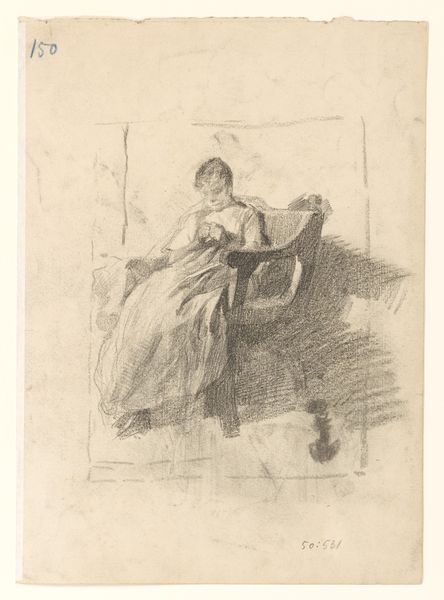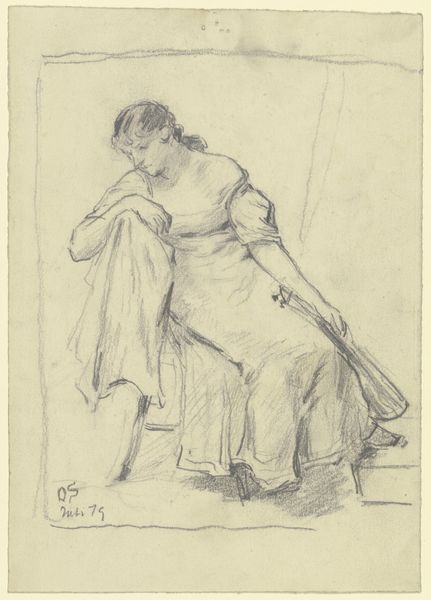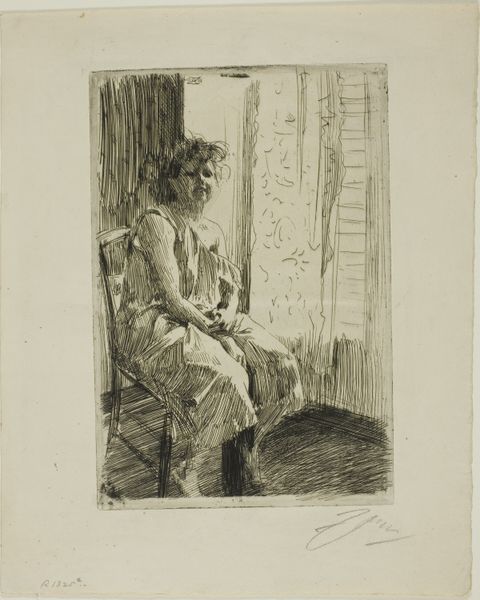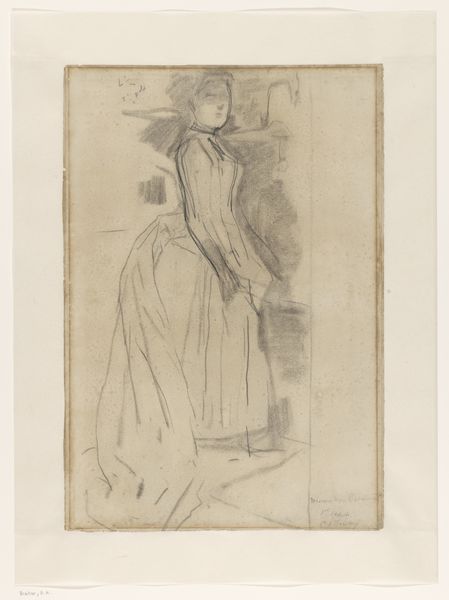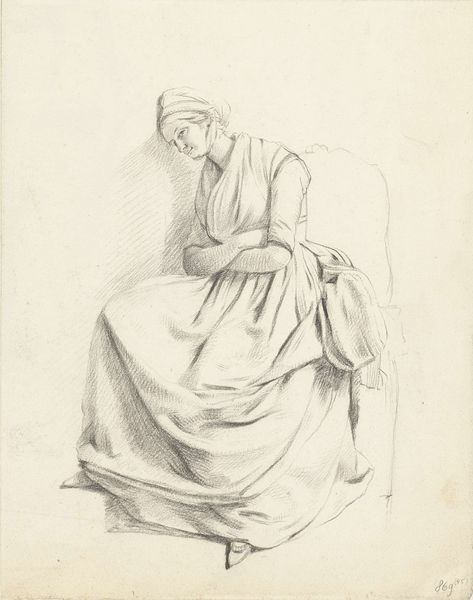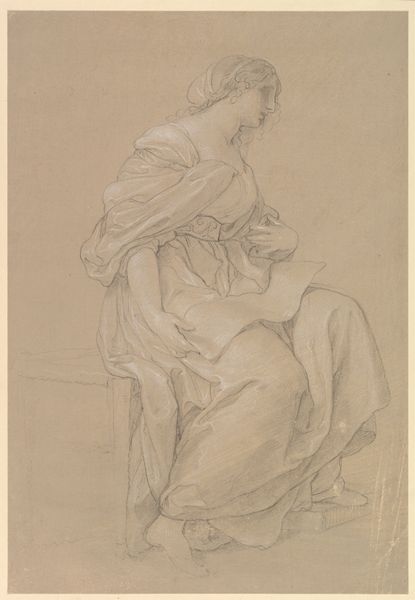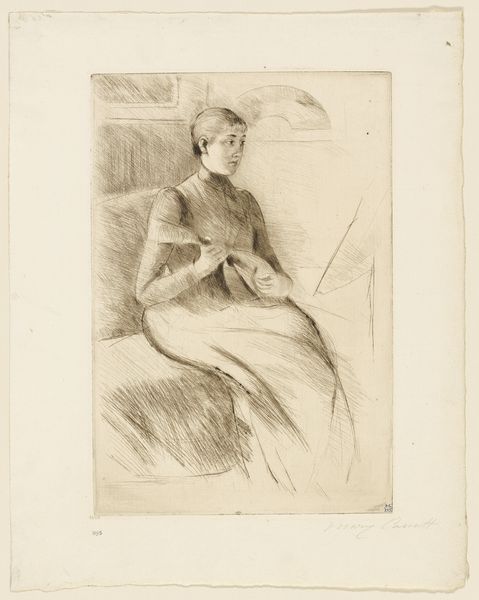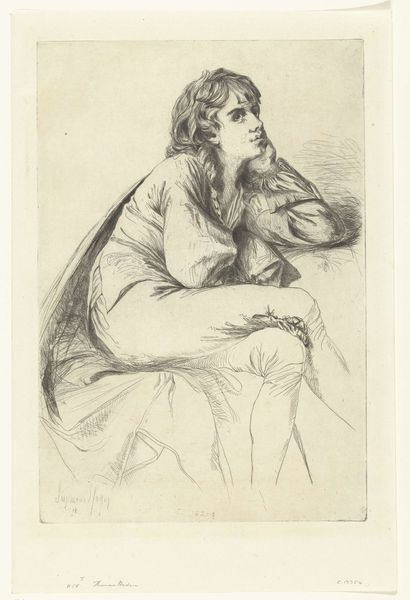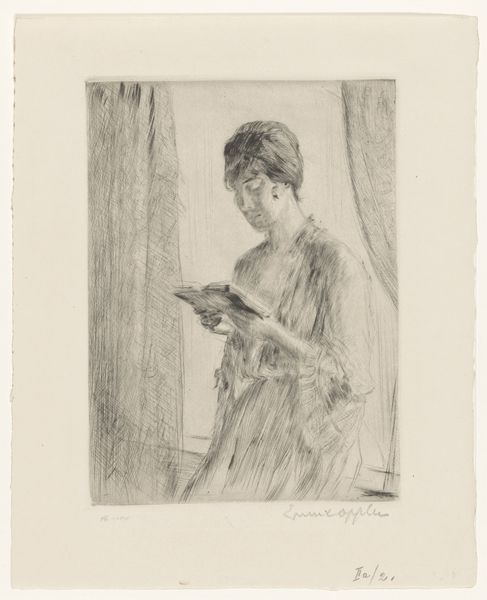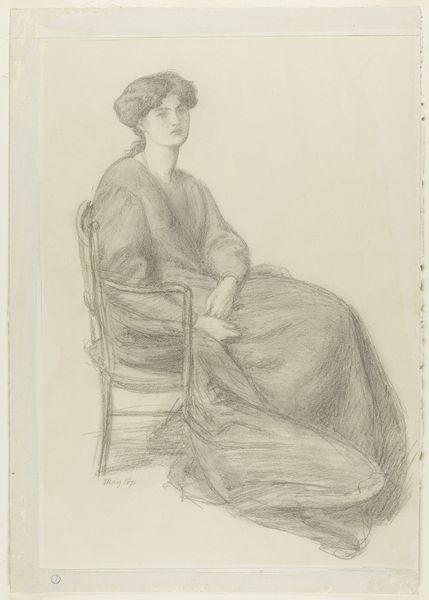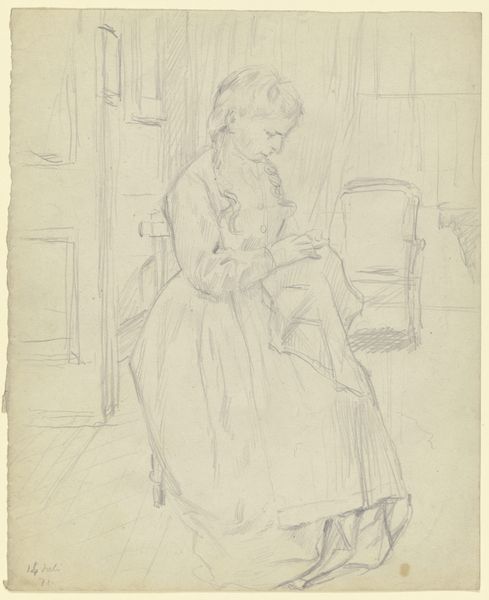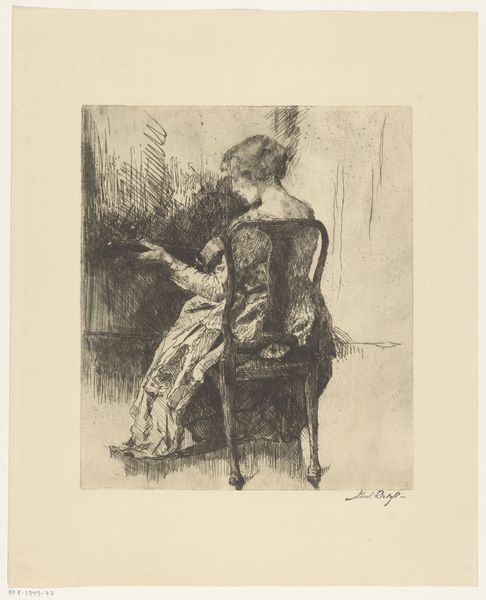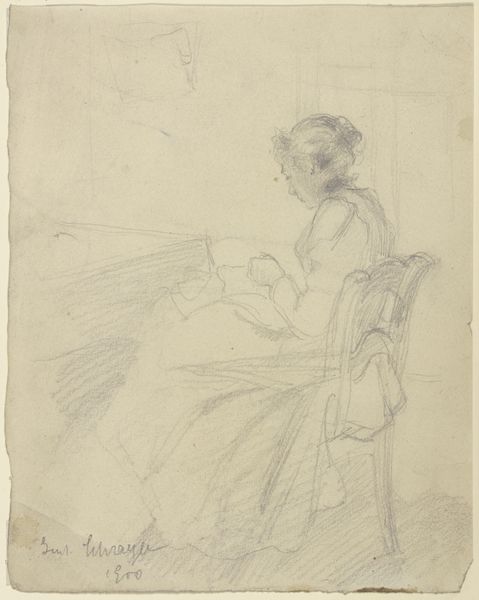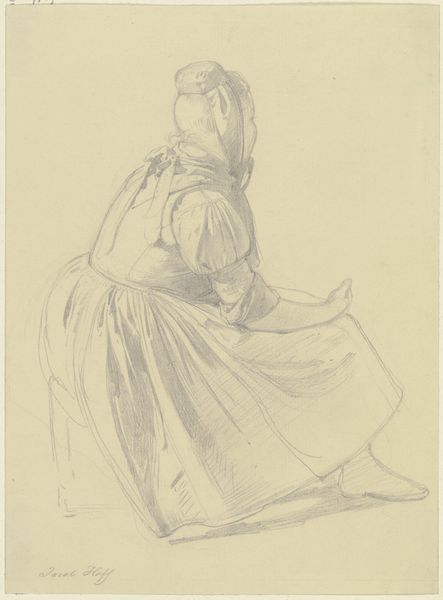
drawing, print, etching, paper, ink, engraving
#
pencil drawn
#
drawing
# print
#
etching
#
figuration
#
paper
#
form
#
ink
#
pencil drawing
#
intimism
#
united-states
#
line
#
portrait drawing
#
genre-painting
#
engraving
#
realism
Dimensions: 11 3/8 x 9 1/8 in. (28.89 x 23.18 cm) (plate)17 5/8 x 11 5/8 in. (44.77 x 29.53 cm) (sheet)
Copyright: Public Domain
Curator: This is "Attentiveness," an etching and engraving on paper by Otto J. Schneider, created around the 19th century. Editor: The delicate lines and soft shading give it such a melancholic, dreamy quality. Curator: Schneider's choice of etching, engraving, and ink on paper invites consideration. This was a moment of increased industrialization in printmaking; what does making this artwork available as a reproducible print tell us about Schneider’s ambitions? Editor: Looking at the form, I'm struck by how the lines aren't just descriptive but almost expressive, contributing to this overall atmosphere of quiet contemplation. See how the diagonal strokes emphasize the drape of her skirt! The economy of line is masterful. Curator: Considering Schneider’s place in America at the time, and the labor involved in this method of reproduction, I see this intimate portrait reflecting on the increasing role of women in the workplace and public life. Etchings and engravings offered wider circulation, creating opportunities to access art. Editor: Perhaps, but observe her posture, the angle of her head. Her gaze leads out of frame—does the line articulate some hidden expectation? There's such emphasis placed on her line of sight that I wonder if that simple form conveys longing or expectation beyond any contextual implication of profession. Curator: But without acknowledging that these portraits served specific purposes, shaping and reinforcing existing social dynamics of a time, we might miss what makes this portrait such an enduring statement about feminine identity as labor and consumption shifted at this period in American History. Editor: Maybe, or the way the spareness directs focus toward that solitary woman; I think that, as a successful formal composition, it simply delivers a mood of poignant introspection. Curator: Ultimately, it is in the connection between medium and moment that the drawing’s richness resides, illustrating transformations in culture through accessible, mass-produced imagery. Editor: Well, no matter the motivations of its moment, its effectiveness lies in its skillful economy of line and tone; it evokes contemplation on form and expression still.
Comments
No comments
Be the first to comment and join the conversation on the ultimate creative platform.
